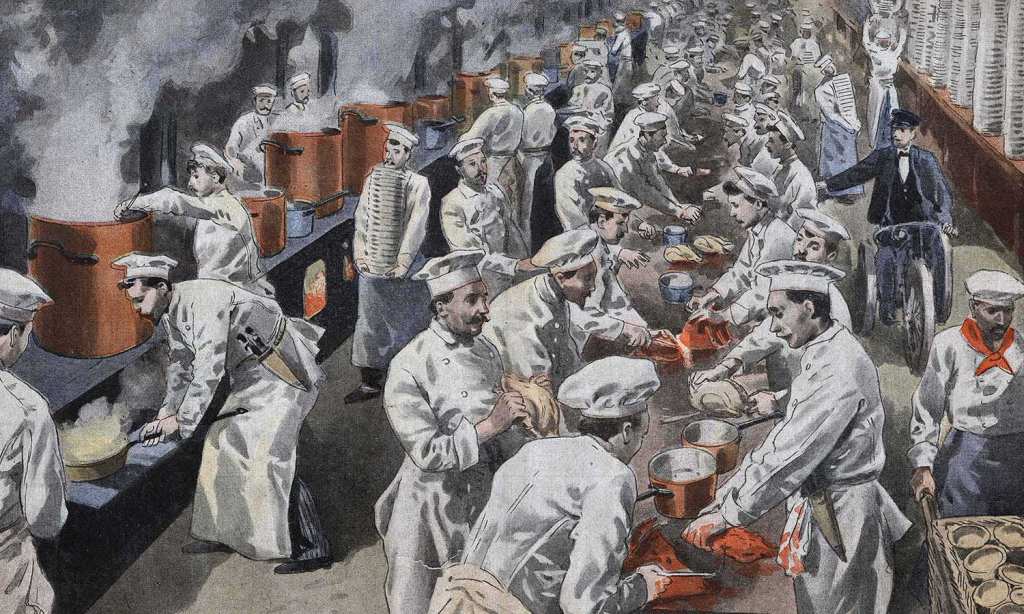I recently walked up to what I thought was a happening ramen joint in Sydney, only to be turned away with the words “this isn’t a restaurant”. I was confused.
Despite the fact the lights were on and steaming bowls of ramen were flying out the door, the venue was not catering to sit-down diners, but rather operating as a dark kitchen, cooking meals only for those who had ordered online for delivery.
Between mid-2018 and February 2020 (even before the height of the pandemic), the use of meal delivery services doubled. Safe to say users have never been more engaged with food delivery apps, and the trend is only set to keep growing as Australians continue to preference nights in.
With an increased demand for food delivery, off-premise food services have exploded.
What are dark kitchens?
Dark kitchens, sometimes referred to as ghost kitchens, virtual kitchens, shadow kitchens, or delivery-only restaurants, refer to kitchens that operate to prepare meals for delivery or takeaway only.
While the chefs occupy a physical kitchen to prepare food, there are no tables or waitstaff for eat-in diners.
“A dark kitchen is a rented kitchen space where restaurateurs can launch a virtual restaurant brand without a brick and mortar location,” Simon Le Grand, director of marketing and product management at Lightspeed (a leading point-of-sale and omnichannel solution for hospitality), tells The Latch.
“They can also operate out of the kitchen of an existing eatery, but produce a different menu offering that is solely available on delivery platforms.”
As for what kinds of food dark kitchens serve up? Well, it can be anything from burgers and soup to salads. “Restaurateurs can elect to dominate a food category that captures customers looking for a certain dish like pasta or burgers. Alternatively, they can choose to focus on dishes in multiple categories. Generally, dark kitchens focus on meals that travel well.”
Benefits of running a dark kitchen
While it sucks to be turned away from sit-in ramen, dark kitchens do possess a number of benefits to the restauranters themselves.
“Without a storefront, dark kitchens avoid all the costs associated with buying or leasing a commercial restaurant space, investing in fit-out and service staff wages. Dishes can be more competitively priced due to the reduction of overheads, and there is also the opportunity to capitalise on increased earning potential, as dark restaurants can sell through as many third-party delivery services as they want, as well as through their own website,” says Le Grand.
“Existing restaurants can also diversify their offering and add a new revenue stream by spinning up ‘dark brands’: offering a differentiated menu under a new identity for takeaway and delivery only, without diluting the reputation of their primary brand.”
In addition, dark kitchens can also provide an opportunity for operators to lease out facilities outside of regular opening hours, which can ultimately help a restaurant offset some of their rental costs.
Impact of dark kitchens to the restaurant industry
There are concerns about how dark kitchens and a growing trend for takeaway dining, in general, may affect restaurants in a negative way.
“Due to their lower operating costs, dark kitchens can undercut traditional brick and mortar restaurants who are offering both dine-in and takeaway options, creating a ‘race to the bottom’ on price and unsustainable margins for operators,” says Le Grand.
For customers, though, dark kitchens provide convenience and choice for consumers “and an opportunity for business owners to diversify their revenue streams: catering for increased demand for takeaway that will be long-standing as we move into the post-pandemic world”.
Despite the pros and cons, one thing that we can depend on is the increased interest and growth around off-premise sales for food operators. As Le Grand says, online ordered food and delivery has grown 221% since 2019 alone.







